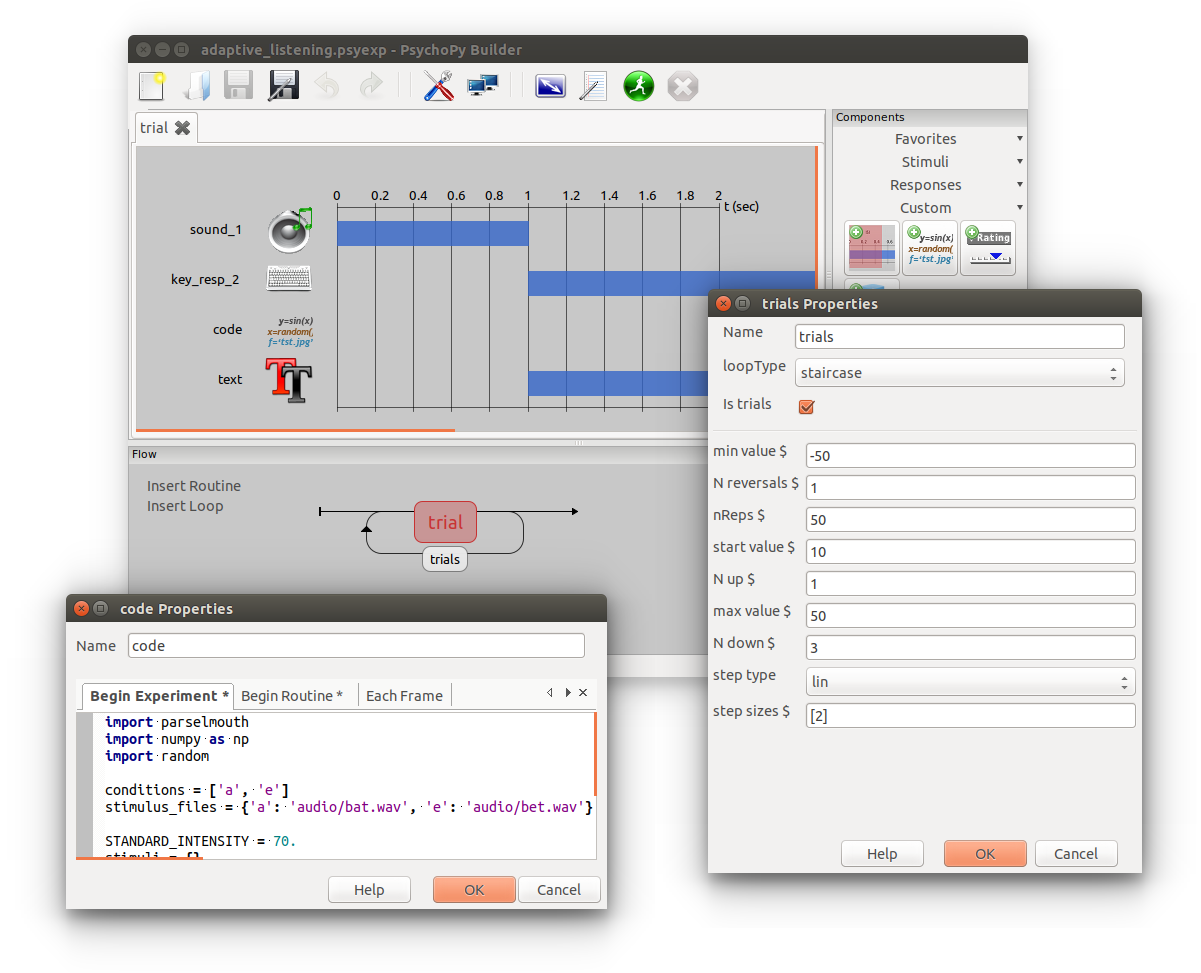

The latter approach could be extended with reaction times by adding columns called cercle1_rt etc. Then under each frame I would do this: if mouse.isPressedIn(cercle_1): So under begin routine: # Mark all non-target cirlces as unpressed Then the column cercle1 would correspond to what you currently call the correct column. Programming with PsychoPy, 3 Programming That went pretty quick.

The other is to have a column for each circle and shift those from "unpressed" to "pressed" when they are clicked. Lab support will make sure all monitor, sound card and interface settings are correct. Then under end routine add: thisExp.addData('n_wrong', n_wrong) A) Task complexity score (max score 7) and B) Mental investment score (max score.
#Psychopy 3 sound jitter software#
The timing mega-study in Bridges et al., analyzes onset lag and jitter for auditory and visual stimulus on a variety of existing software packages for designing and running behavioral experiments on PC. outputDevice, bufferSize: set these parameters on the pyoSndServer before booting None means use pyo’s default values class psychopy.microphone. So recording at 48kHz will generate high-quality archival data, and permit easy downsampling. # Now wait until the mouse release to prevent recording 60 wrong clicks per second! processing of the sounds under different levels of cognitive load. The Wave Shield feedback requires more time to emit a sound (2.6 ms on average) but still has low jitter (0.3 ms). pyo’s downsamp () function can reduce 48,000 to 16,000 in about 0.02s (uses integer steps sizes). See Defining the onset/duration of components for details. start float or integer The time that the stimulus should first play. The name should contain only letters, numbers and underscores (no punctuation marks or spaces). Then in each frame add: if mouse.isPressedIn(cercle_1):Įlif mouse.isPressedIn(cercle_2) or mouse.isPressedIn(cercle_3) or mouse.isPressedIn(cercle_4) or mouse.isPressedIn(cercle_5): Sound Component ¶ Parameters ¶ name string Everything in a PsychoPy® experiment needs a unique name. n_wrong) and count the number of non-circle_1 responses. This can be hard to find an appropriate data structure for, but in your case, I can think of two solutions. It sounds like you want to record a sequence of events in the trial. Right now, I only have how long it took to get the correct answer. Question : How can I have in my csv file infos about all the times a participant pressed the mouse bouton.Maybe before pressing cercle_1, he pressed the cercle_3. I would have no idea if the participant tried other circle before pressing on circle_1. The problem is that my datafile only contains the response time (RT) and the info of the circle_1.

#Psychopy 3 sound jitter code#
My code : if mouse.isPressedIn(cercle_1): 3) I have Piglet and Pyo installed and have uninstalled and reinstalled both. 2) I have tried to play simple audio files and those won't play the sound either.
#Psychopy 3 sound jitter movie#
So there is nothing wrong with the sound of the movie files. I have 5 circles on the screen and the participant needs to pressed on the good circle. Here are a couple of things I have already tried: 1) The movies do play sound when I run them in QuickTime or VLC player. I'm using psychopy to build a cognitive task.


 0 kommentar(er)
0 kommentar(er)
